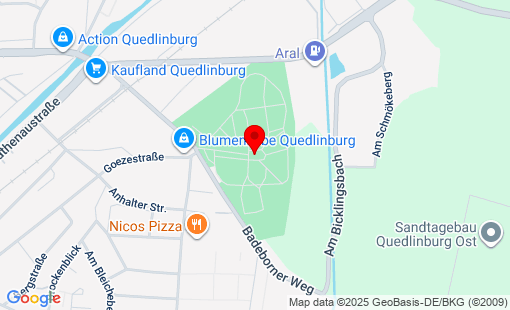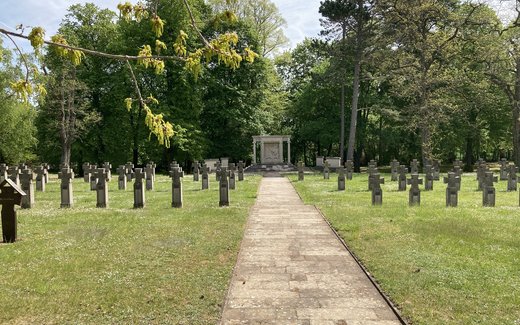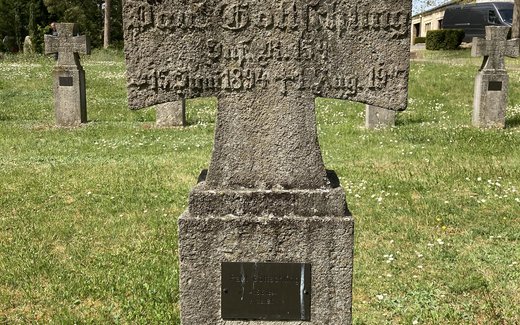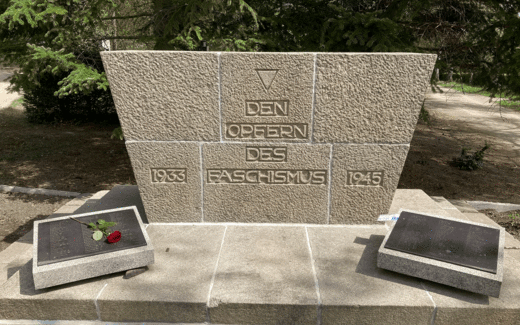The Quedlinburg Central Cemetery was laid out according to plans by the Breslau
Garden architect Hans Pietzner and opened in 1904. The layout of the
Cemetery was based on the extensive landscape parks of the 19th century.
Century.
There is a military cemetery on the east side of the chapel. The
Main memorial of the war cemetery is dedicated to the deceased of the
Prisoner of war camp, which was located at the gates of the town on Ritteranger
at the gates of the town. The memorial was created in 1917/18 by the sculptor C.E. Poirier
based on a design by the architect C.E. Seigneur. The monument has an
Aedicule with relief and inscriptions. Surrounded by a cross field, the names
of 444 dead are engraved on the back of the monument. The first burial
was for an infantry corporal from North Africa who fought for France
Infantry corporal fighting for France.
A total of 559 war dead are buried here. Of these, 147 were
Of these were German soldiers who died between November 21, 1914 and July 14, 1919.
July 1919 in the Quedlinburg military hospital. From March 1917, stone crosses were erected for the
Stone crosses were erected for the dead. The cemetery was also used to bury deceased inmates
of the Quedlinburg prisoner-of-war camp were also buried there. Between
25. September 1914 and February 26, 1920, 700 prisoners of war died in the camp,
including 412 Russians, 155 French, 101 British and 32 Italians. For the
initially wooden crosses were erected for the deceased prisoners of war, which were
made by the prisoners. They also had to
POW graves. The memorial was financed by
Donations from the prisoners of war. The inauguration of the memorial took place on 30.
June 1918. The camp commandant had invited people to the ceremony. There were
representatives of the town of Quedlinburg and the local military attended. The
Quedlinburg mayor Bansi promised during his speech: "[...]
these graves and the beautiful memorial that crowns them will be in good hands for all time
good care. We will protect and care for them as we do for our own brothers.
With this assurance, I take over the monument for the town of Quedlinburg."
While the French, British and Italians were exhumed in the 1920s
were exhumed in the 1920s, the Germans and Russians remained buried here. In 2014, the memorial was
the memorial was renovated.
On July 16, 1997, two sandstone plaques were ceremoniously inaugurated on
on which the fallen of the Second World War are named. They are located in the
upper part of the war cemetery.
The bodies of 912 prisoners from the Langeste concentration camp were sent to the crematorium of the central cemetery
the Langestein-Zwieberge concentration camp for cremation.
After 1945, the bodies from Poland, the Soviet Union, France, Italy, Belgium,
the Netherlands, Hungary, Czechoslovakia, Yugoslavia, Luxembourg,
Romania and Germany were memorialized.
Germany
Quedlinburg
Total Occupation: 1.082 fatalities
Total Occupation: 1.082 fatalities
Contact



